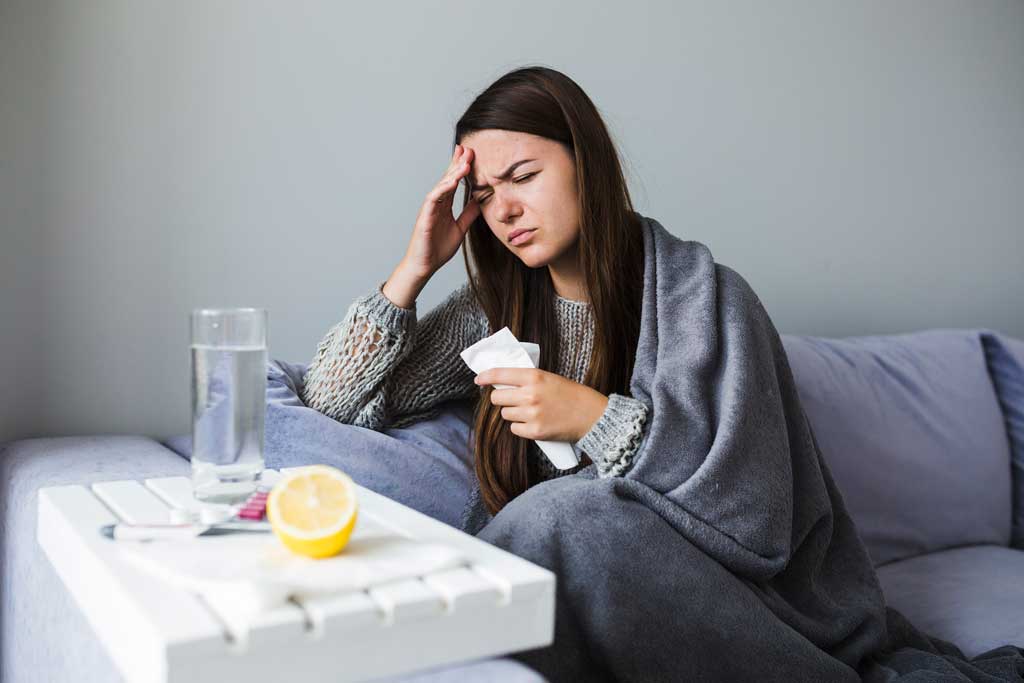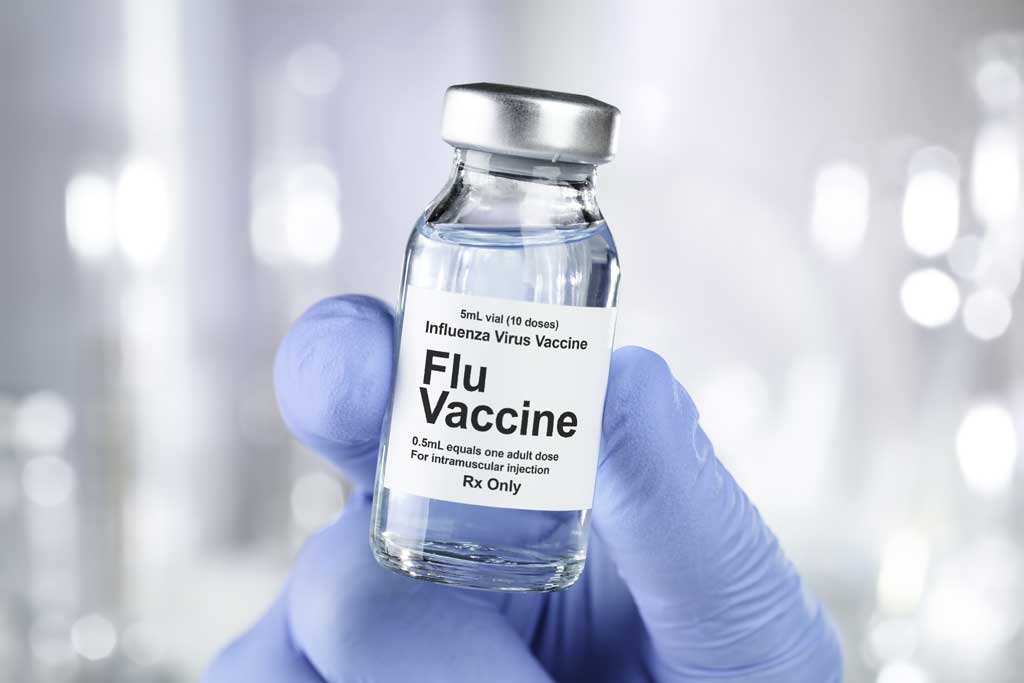In the realm of public health, few measures are as crucial as the annual flu shot. As the seasonal influenza virus circulates, getting a flu shot becomes a paramount defense against its potentially severe impacts. This article delves into the significance of flu vaccination, the benefits it offers, and the pivotal question: “When should I get my flu shot?” By understanding the optimal timing, we empower ourselves with a shield that not only safeguards our health but also contributes to curtailing the transmission of the flu virus.
Article Goal: Understanding the Optimal Timing for Your Flu Shot
The journey to a healthier flu season begins with a simple yet impactful action: getting your flu shot. In this article, our aim is to unravel the mystery behind the question that looms each year – “When should I get my flu shot?” By exploring the benefits of the flu shot and delving into the nuances of timing, we equip you with the knowledge needed to make an informed decision. Armed with insights about the optimal window for receiving your flu shot, you can take charge of your health, harnessing the full array of benefits that this preventive measure has to offer.

Table of Contents
What is flu?
The flu, short for influenza, is a highly contagious viral infection that primarily affects the respiratory system. It is caused by influenza viruses, which belong to the Orthomyxoviridae family. The flu is characterized by symptoms such as fever, chills, cough, sore throat, runny or stuffy nose, muscle or body aches, fatigue, and sometimes vomiting or diarrhea. It can range from mild to severe and can lead to complications, particularly in vulnerable populations like the elderly, young children, pregnant women, and individuals with certain medical conditions.
The flu virus is known for its ability to mutate and change over time, which is why new flu vaccines are developed each year to target the strains expected to be most prevalent during the upcoming flu season. The virus spreads primarily through respiratory droplets produced when an infected person coughs, sneezes, or talks. It can also spread by touching surfaces or objects contaminated with the virus and then touching the face, especially the mouth, nose, or eyes.
Because the flu can cause significant illness, hospitalizations, and even deaths, it’s important to take preventive measures, such as getting a yearly flu vaccine, practicing good hygiene (like regular handwashing), and staying home when sick to avoid spreading the virus to others.

what are the 5 symptoms of influenza
Influenza, or the flu, manifests through a set of distinct symptoms that set it apart from other respiratory illnesses. The quintessential indicators include fever, body aches, fatigue, cough, and a sore throat. When these symptoms converge, they create an unmistakable profile that signifies the presence of the flu virus.
Recognizing these symptoms is pivotal not only for prompt diagnosis and treatment but also for considering the preventive prowess of the flu shot. By getting vaccinated, you not only shield yourself from the potential discomfort of these symptoms but also contribute to the broader health of your community. The benefits of the flu shot extend beyond individual protection, forming a collective defense against the virus’s spread.
People who have flu often feel some or all of these symptoms:
- fever* or feeling feverish/chills.
- cough.
- sore throat
- muscle or body aches.
- fatigue (tiredness)
The Importance of Flu Vaccination
Embracing the flu shot isn’t merely a personal choice; it’s a conscientious step toward safeguarding your health and that of those around you. The benefits of the flu shot extend far beyond its initial injection, encompassing a spectrum of protective effects.
Reducing the Risk of Illness
At its core, the flu shot is a powerful shield against the influenza virus. By introducing a weakened or inactivated form of the virus into the body, the vaccine triggers the production of antibodies. These antibodies stand as vigilant sentinels, primed to thwart any subsequent encounter with the real virus. This translates to a significantly reduced risk of falling victim to the flu’s unwelcome grip.
Preventing Severe Complications
The flu is no trivial matter; it can evolve into a severe illness, especially for vulnerable populations like the elderly, young children, pregnant women, and individuals with chronic health conditions. The flu shot acts as a formidable defense, lessening the likelihood of complications like pneumonia, hospitalizations, and even death.
Shielding Vulnerable Populations
One of the most compelling reasons to opt for the flu shot is its role in protecting those who are more susceptible to the virus’s harsh impact. By getting vaccinated, you contribute to creating a barrier that surrounds and shields vulnerable populations from the virus’s reach.
The comprehensive benefits of the flu shot underscore its status as a cornerstone of preventive healthcare. Beyond personal well-being, the flu shot is a catalyst for building resilient communities where the flu’s transmission is curbed, and health is fortified. Every flu shot received ripples outward, resonating with the broader concept of communal health and solidarity in the face of a shared challenge.

misconceptions about flu shot
The flu shot, a stalwart ally in the battle against influenza, sometimes finds itself shrouded in misconceptions that need debunking. Let’s unravel some of the common concerns and set the record straight, reaffirming the undeniable benefits of this preventive measure.
Effectiveness Doubts
Misconception: Some believe that the flu shot is not very effective, especially if the vaccine doesn’t match the circulating strains exactly.
Reality: While the flu vaccine’s effectiveness can vary depending on how well it matches the circulating strains, even partial protection is valuable. Studies show that the flu shot reduces the risk of severe illness, hospitalizations, and complications even when strains aren’t a perfect match.
Side Effects Overblown
Misconception: Worries about flu shot side effects, such as a mild fever or sore arm, might discourage individuals from getting vaccinated.
Reality: Side effects of the flu shot are generally mild and short-lived. A sore arm or mild fever might occur, but these minor inconveniences pale in comparison to the potential consequences of getting the flu itself.
Getting the Flu from the Vaccine
Misconception: Many fear that the flu shot can actually give them the flu.
Reality: The flu vaccine contains either inactivated virus or a weakened version that cannot cause the flu. While some might experience mild flu-like symptoms after getting the vaccine, this is usually the body’s immune response and not the actual flu.
One and Done Protection
Misconception: Some assume that getting the flu shot once guarantees lifelong protection.
Reality: The flu virus evolves and changes, necessitating annual flu shots to address new strains that emerge each year.
By dispelling these misconceptions, we pave the way for informed decision-making. The flu shot’s benefits extend beyond personal health; they ripple through communities, bolstering our collective resilience against the flu’s impact. With factual information in hand, we can confidently embrace the flu shot, contributing not only to our own well-being but to the well-being of society as a whole.
Timing Matters: When to Get Your Flu Shot
Navigating the intricacies of flu season requires precision, particularly when it comes to the optimal timing for receiving your flu shot. The question of “when to get your flu shot” holds the key to maximizing the vaccine’s protective effects.
Experts recommend getting your flu shot during the late September to early October timeframe. This strategic window strikes a balance between ensuring you’re protected before flu activity typically increases and avoiding the potential waning of vaccine effectiveness later in the season. By rolling up your sleeve during this period, you arm your immune system to mount a defense just as flu activity gains momentum.
However, the benefits of the flu shot extend beyond this specific window. Even if you miss the early mark, getting vaccinated later in the season can still provide protection. Flu activity can persist well into spring, so it’s never too late to take advantage of the vaccine’s shield.
The key takeaway is this: Don’t wait until the flu is knocking on your door. By proactively scheduling your flu shot within the recommended timeframe, you empower your immune system and fortify your defenses against this pervasive and potentially debilitating illness. Remember, every day counts when it comes to safeguarding your health and the health of your community.
Personalizing Your Flu Shot Timing
When it comes to getting your flu shot, one size doesn’t fit all. Several factors can influence the optimal timing for your vaccination, ensuring you receive the most effective protection tailored to your circumstances.
1. Age:
Different age groups may experience varying levels of vulnerability to the flu. Young children and the elderly, for instance, tend to be more susceptible to severe complications. For these groups, it’s especially important to prioritize early vaccination to build immunity before flu activity peaks.
2. Health Status:
Individuals with chronic medical conditions, weakened immune systems, or other health concerns may benefit from an early flu shot. These conditions can make them more susceptible to severe flu-related complications, emphasizing the need to maximize the vaccine’s protection.
3. Potential Travel Plans:
If you have travel plans during flu season, especially to regions with differing flu patterns, consider getting vaccinated well in advance. This approach allows your body to develop immunity before potential exposure to new strains in unfamiliar environments.
4. Occupational Considerations:
Certain professions expose individuals to higher risks of flu exposure due to close contact with the public or crowded environments. Healthcare workers, teachers, and public transportation employees, for instance, may want to prioritize early vaccination to minimize their risk.
5. Pregnancy:
Pregnant women are more susceptible to severe flu-related complications. The flu shot is recommended and safe during pregnancy, offering protection not just for the mother but also for the newborn during the early months of life.
6. Community Circumstances:
If your community experiences early or intense flu activity, it’s advisable to get vaccinated sooner rather than later. This consideration can be especially relevant in densely populated areas.
By factoring in these nuances, you can tailor your flu shot timing to align with your specific circumstances. Whether you’re safeguarding your health, protecting vulnerable family members, or ensuring a healthy journey, the flu shot’s benefits are amplified when timed thoughtfully. Ultimately, the goal remains the same: maximizing your immunity and contributing to a healthier community.

where can i get a flu shot
Getting your flu shot has never been easier, thanks to the diverse range of options available. Whether you prefer traditional healthcare settings or more accessible venues, there’s a flu shot solution tailored to your convenience.
1. Doctor’s Offices:
Your primary care physician or healthcare provider is a reliable source for flu vaccinations. Simply schedule an appointment and discuss any specific health concerns you might have before receiving the vaccine.
2. Pharmacies:
Many local pharmacies offer flu shots on a walk-in basis. Pharmacists are trained to administer vaccines and can answer any questions you might have about the process or potential side effects.
3. Urgent Care Clinics:
Urgent care clinics provide timely medical services, including flu shots. These facilities often offer extended hours, making it convenient for those with busy schedules.
4. Community Health Clinics:
Community health clinics and health departments may offer flu shots at little to no cost, especially for underserved populations. Check with your local health department for information on availability.
5. Workplaces and Schools:
Some employers and educational institutions arrange on-site flu vaccination clinics. This approach not only promotes a healthy environment but also encourages broader community immunity.
6. Mobile Clinics:
In some regions, mobile clinics or health vans provide flu shots at convenient locations like shopping centers or community events.
7. Telemedicine:
Virtual healthcare options are gaining popularity. While flu shots themselves may require an in-person visit, telemedicine can be useful for pre-screening, education, and scheduling.
Before getting your flu shot, consider checking with your healthcare provider or chosen vaccination site to ensure they have the vaccine available and to verify any potential age or health restrictions. With such a diverse array of options, there’s no excuse to forego the protective benefits of the flu shot. Convenience meets preventive care, ensuring you’re armed against the flu and contributing to a healthier community.
Act Now for a Healthier Future
Embrace the flu shot within the suggested late September to early October window, fortifying your defenses and fostering community well-being. Your proactive choice not only shields you from the flu’s grip but also contributes to reducing its spread. Don’t wait – make your health a priority and join the collective effort to navigate flu season with resilience and strength.
For further information about the flu, vaccination, and public health recommendations, consider exploring these reputable sources:
- Centers for Disease Control and Prevention (CDC):
Visit the CDC’s Flu website for comprehensive information about the flu, vaccination recommendations, and updates on flu activity: CDC Flu Website- World Health Organization (WHO):
The WHO provides global insights on flu outbreaks, vaccination strategies, and public health measures: WHO Flu Information- National Institutes of Health (NIH):
Learn about flu research, treatment options, and the science behind flu viruses from the NIH: NIH Flu InformationRemember to rely on credible sources for accurate information, especially when it comes to health-related topics. These sources will provide you with valuable insights to make informed decisions about your health and well-being.








